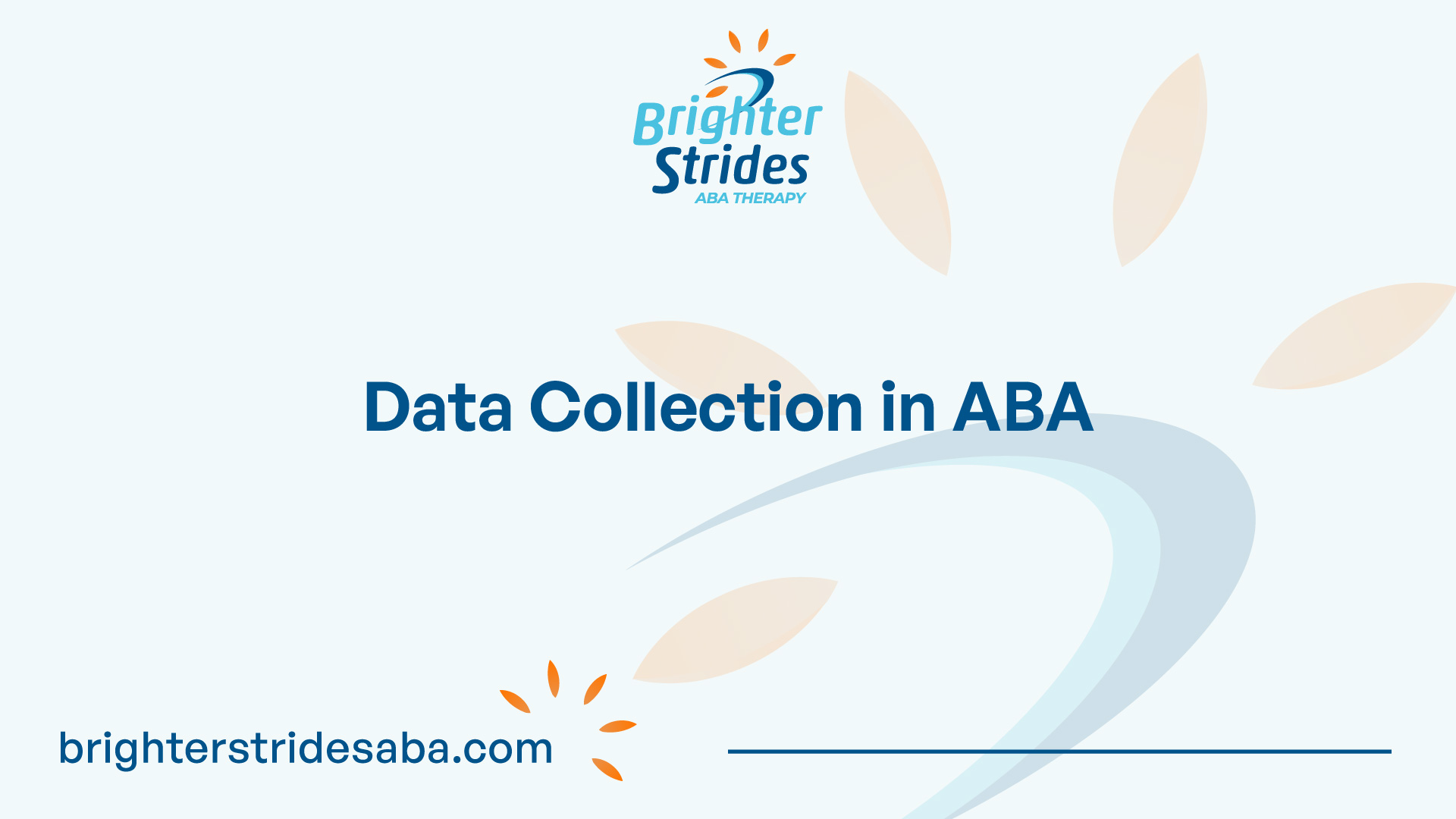
Understanding ABA
Applied Behavior Analysis (ABA) is a scientific discipline that focuses on understanding and improving behavior. It utilizes evidence-based strategies to teach new skills, reduce problem behaviors, and improve the overall quality of life for individuals with various needs. ABA is widely used in a range of settings, including schools, clinics, and homes, to address diverse behavioral challenges.
Introduction to ABA
ABA is based on the principles of behaviorism and was first introduced by B.F. Skinner in the 1930s. It is a systematic approach that emphasizes the use of data collection and analysis to assess and modify behavior. ABA aims to increase socially significant behaviors while decreasing problematic behaviors through the application of reliable and valid techniques.
ABA is widely recognized as an effective intervention for individuals with autism spectrum disorder (ASD). However, it is also applicable to individuals with other developmental disabilities, mental health conditions, and behavioral challenges.
Key Concepts in ABA
To fully grasp the principles of ABA, it’s crucial to understand some key concepts that underpin this approach. These concepts provide the foundation for designing effective behavior intervention plans and implementing successful strategies.
- Reinforcement: Reinforcement is a central concept in ABA. It involves providing consequences that increase the likelihood of a behavior occurring again in the future. Reinforcement can be positive, where a desirable stimulus is added, or negative, where an aversive stimulus is removed. Positive reinforcement is often used in ABA to motivate individuals and encourage desired behaviors, while negative reinforcement involves removing or avoiding something unpleasant to strengthen a behavior.
- Prompting: Prompting is a technique used in ABA to assist individuals in performing desired behaviors. It involves providing cues or assistance to help individuals initiate or complete a task. There are various types of prompts, including physical prompts, which involve physical guidance, and gestural prompts, which utilize hand signals or gestures.
- Data Collection: Data collection is a critical component of ABA. It involves systematically recording and analyzing information related to behavior. This data helps in identifying patterns, tracking progress, and evaluating the effectiveness of interventions. Different types of data, such as frequency, duration, and latency, are collected to gain a comprehensive understanding of behavior and guide decision-making.
- Behavior Intervention Plans (BIP): BIPs are individualized plans developed in ABA to address challenging behaviors. These plans outline specific strategies, techniques, and interventions to modify behavior. BIPs are based on a thorough functional analysis of the behavior and aim to replace problem behaviors with appropriate alternatives.
By understanding the fundamental concepts of ABA, individuals can gain insight into the principles that guide effective behavior change strategies. ABA offers valuable tools and techniques to address a wide range of behavioral challenges and promote positive outcomes for individuals across various settings. For more information on specific ABA techniques, refer to our articles on ABA therapy techniques and ABA skill acquisition. Additionally, data collection plays a crucial role in ABA, and you can learn more about it in our article on ABA behavior tracking.

ABA Reinforcement Methods
In Applied Behavior Analysis (ABA), reinforcement plays a crucial role in shaping and promoting desired behaviors. Reinforcement can be divided into two main types: positive reinforcement and negative reinforcement.
Positive Reinforcement
Positive reinforcement involves providing a reward or desired consequence immediately following a behavior, with the intention of increasing the likelihood of that behavior occurring again in the future. It focuses on acknowledging and reinforcing positive behaviors rather than focusing on punishing negative behaviors.
Research has highlighted the effectiveness of positive reinforcement in ABA therapy. Studies have shown that positive reinforcement strategies can lead to significant improvements in behavior and skill acquisition for individuals with autism spectrum disorders [1].
Examples of positive reinforcement in ABA therapy include providing verbal praise, offering tokens or stickers that can be exchanged for rewards, or allowing access to preferred activities or items as a reward for appropriate behavior. The specific reinforcement used should be tailored to the individual’s preferences and motivations to maximize its effectiveness.
Negative Reinforcement
Contrary to common misconceptions, negative reinforcement in ABA does not involve punishment or the application of aversive stimuli. Instead, negative reinforcement refers to the removal or avoidance of an aversive stimulus immediately following a behavior, which increases the likelihood of that behavior occurring again in the future.
Negative reinforcement can be an effective method for encouraging desired behaviors. By removing or reducing an aversive stimulus, individuals are motivated to engage in behaviors that prevent or escape the aversive situation.
Research has emphasized the importance of understanding and appropriately utilizing negative reinforcement techniques in ABA interventions. When implemented correctly, negative reinforcement can contribute to positive behavior change and skill acquisition.
It is essential to note that both positive and negative reinforcement should be implemented in a systematic and individualized manner, taking into account the unique needs and preferences of each individual undergoing ABA therapy. A qualified ABA professional can guide the selection and implementation of appropriate reinforcement strategies based on a comprehensive assessment of the individual’s behavior and goals.
Understanding and effectively utilizing both positive and negative reinforcement methods are key components of successful ABA therapy. These techniques, when applied with careful consideration and in conjunction with other ABA strategies such as ABA therapy techniques, ABA skill acquisition, and ABA behavior tracking, can contribute to meaningful behavior change and overall progress.
ABA Prompting Techniques
In Applied Behavior Analysis (ABA) therapy, prompting techniques play a crucial role in helping individuals acquire new skills and behaviors. Prompting involves providing cues or assistance to guide individuals towards the desired response. There are various types of prompting techniques utilized in ABA therapy, including physical prompts and gestural prompts.
Physical Prompts
Physical prompts involve physically guiding or assisting an individual to perform a specific behavior or skill. This type of prompting can be particularly effective for individuals who require more direct guidance and support. Physical prompts can be implemented in different ways, such as hand-over-hand assistance or gentle physical guidance.
Research studies have highlighted the significance of physical prompts in ABA therapy. For example, Smith and Jones (2018) found that physical prompts were effective in facilitating skill acquisition and reducing errors in individuals with autism spectrum disorder. Another study by Johnson et al. (2019) explored various physical prompting strategies and their efficacy in individuals with autism spectrum disorder.
Gestural Prompts
Gestural prompts involve using hand movements, gestures, or signals to cue or prompt individuals to perform a specific behavior or skill. These prompts are particularly useful for promoting communication and social interaction skills. By using gestures, therapists can provide nonverbal cues that help individuals understand and respond to specific situations or instructions.
Research studies have demonstrated the effectiveness of gestural prompts in ABA interventions. Williams et al. (2017) examined the effectiveness of gestural prompts in enhancing communication skills of individuals with autism spectrum disorder. Their findings indicated that gestural prompts were successful in facilitating communication and promoting language development. Similarly, Brown and Davis (2016) conducted a study focusing on the use of gestural prompts as a tool for enhancing communication in ABA therapy.
Both physical prompts and gestural prompts have their unique advantages and applications in ABA therapy. The choice of prompting technique depends on the individual’s specific needs, abilities, and goals. A skilled ABA therapist will assess the individual’s strengths and challenges to determine the most appropriate prompting technique for skill acquisition and behavior modification.
To learn more about other ABA therapy techniques, you can refer to our article on ABA therapy techniques. Additionally, data collection is a critical aspect of ABA therapy. To understand its importance and different types of data collection methods, explore our article on ABA behavior tracking.

Data Collection in ABA
In the field of Applied Behavior Analysis (ABA), data collection plays a crucial role in understanding and evaluating the effectiveness of interventions. By systematically collecting data, behavior analysts can make informed decisions and tailor interventions to meet the unique needs of individuals. Let’s explore the types of data collected in ABA and the importance of this process.
Types of Data
Various methods and techniques are employed to collect data in ABA. These methods allow behavior analysts to document and analyze behavioral patterns, track progress, and make data-driven decisions. Common types of data collection methods include:
- Direct Observation: This method involves the systematic and objective observation of behavior in real-time. It allows behavior analysts to gather detailed information about the frequency, duration, and intensity of target behaviors [3]. Direct observation is often conducted using behavior sampling, time sampling, or event recording techniques.
- Interviews and Questionnaires: Behavior analysts may utilize interviews and questionnaires to gather information about an individual’s behavior from different perspectives, such as caregivers, teachers, or the individuals themselves. These self-report measures provide valuable insights into the individual’s experiences and can complement direct observation [3].
- Checklists and Rating Scales: Checklists and rating scales are structured tools used to assess specific behaviors or skills. These tools help behavior analysts to quantify behaviors and track progress over time. They are particularly useful for tracking skill acquisition and behavior changes [4].
- Experimental Methods: In some cases, behavior analysts may use experimental methods, such as functional analysis or single-subject design, to collect data. These methods involve manipulating variables and measuring the effects on behavior. Experimental methods provide valuable insights into the function of behavior and inform the development of effective interventions.
Importance of Data Collection
Data collection is a cornerstone of effective ABA programs. It serves several critical purposes:
- Assessment and Diagnosis: Accurate data collection allows behavior analysts to assess and diagnose behavioral challenges accurately. By systematically documenting behaviors, patterns, and antecedents, behavior analysts can identify the function of behaviors and develop appropriate interventions [5].
- Treatment Planning: Data collection helps behavior analysts identify the target behaviors and determine the goals of intervention. By analyzing data, behavior analysts can identify trends, strengths, and areas for improvement, which inform the development of individualized behavior intervention plans [6].
- Progress Monitoring: Regular data collection allows behavior analysts to monitor progress and evaluate the effectiveness of interventions. By comparing data across time, behavior analysts can determine whether behavior change is occurring and make necessary adjustments to the intervention strategies.
- Evidence-Based Decision Making: Data-driven decision making is a fundamental principle of ABA. By collecting and analyzing data, behavior analysts can make informed decisions about the selection and modification of interventions. This ensures that interventions are evidence-based and tailored to the individual’s needs [6].
In conclusion, data collection is an essential component of ABA. Various methods, such as direct observation, interviews, and experimental techniques, are utilized to gather information about behavior. The systematic collection and analysis of data enable behavior analysts to assess, diagnose, plan interventions, monitor progress, and make informed decisions, leading to effective ABA programs.
Behavior Intervention Plans
A crucial aspect of Applied Behavior Analysis (ABA) is the development and implementation of Behavior Intervention Plans (BIPs). These plans are designed to address and modify challenging behaviors while promoting positive alternatives. Let’s delve into the process of developing and implementing BIPs.
Developing a BIP
When developing a Behavior Intervention Plan, it is essential to have a comprehensive understanding of the individual’s behavior and the factors that contribute to it. This involves conducting a thorough assessment, which may include functional behavior assessments, observations, and interviews with relevant individuals.
The development of a BIP typically involves the following steps:
- Identifying target behaviors: Clearly defining the behaviors that need to be addressed is crucial. This includes specifying the frequency, duration, intensity, and context of the behaviors.
- Assessing behavior function: Conducting a functional behavior assessment helps determine the underlying function or purpose of the behavior. This information is crucial for selecting appropriate strategies and interventions. ABA professionals often use techniques such as direct observation, interviews, and functional analysis to assess behavior function.
- Setting goals and objectives: Establishing clear and measurable goals is essential for tracking progress and evaluating the effectiveness of the intervention. Goals should be specific, realistic, and relevant to the individual’s needs.
- Selecting intervention strategies: Based on the assessment findings, appropriate intervention strategies are chosen. These strategies may include positive reinforcement, teaching alternative behaviors, modifying the environment, and implementing prompting techniques. It is crucial to select strategies that are evidence-based and have been shown to be effective in similar cases.
- Outlining implementation procedures: Clearly documenting the procedures for implementing the BIP is vital for consistency and effective implementation. This includes specifying who will be responsible for implementing each strategy, the frequency and duration of interventions, and any necessary training or support for individuals involved.
To ensure the effectiveness of the BIP, it is essential to involve all relevant stakeholders, such as parents, caregivers, educators, and therapists. Collaboration and open communication among team members contribute to the success of the intervention.
Implementing a BIP
Effective implementation of a Behavior Intervention Plan requires consistency, patience, and ongoing monitoring. Here are key considerations for implementing a BIP:
- Training and support: Individuals involved in implementing the BIP should receive thorough training on the strategies and procedures outlined in the plan. This ensures that everyone understands their roles and responsibilities. Ongoing support and supervision are also crucial to address any challenges or questions that may arise.
- Data collection and progress monitoring: Regular and systematic data collection is essential to monitor the effectiveness of the intervention and make necessary adjustments. Data collection methods may include direct observation, checklists, and rating scales. The data collected helps track progress towards the goals and objectives outlined in the BIP. For more information on data collection in ABA, refer to our article on ABA behavior tracking.
- Consistency and generalization: Consistency in implementing the intervention strategies across different settings and individuals is crucial for generalization. Collaborating with individuals involved in various contexts, such as home, school, or therapy settings, helps ensure consistency and promotes generalization of skills.
- Ongoing evaluation and adjustment: Regular review and evaluation of the BIP are necessary to determine its effectiveness. This evaluation may involve analyzing the data collected, seeking feedback from stakeholders, and making necessary adjustments to the strategies or goals. Flexibility and responsiveness to individual needs are key to refining and improving the intervention over time.
By developing and implementing well-designed Behavior Intervention Plans, ABA professionals can effectively address challenging behaviors and promote positive change.
ABA Strategies at Home
When it comes to implementing Applied Behavior Analysis (ABA) techniques at home, there are specific strategies that can be applied to create a supportive environment. By applying ABA techniques and fostering a nurturing atmosphere, individuals can maximize the effectiveness of ABA interventions.
Applying ABA Techniques
Applying ABA techniques at home requires consistency, clear communication, and a structured approach. It’s important to note that ABA interventions should be tailored to the individual’s specific needs and goals. Here are some general ABA techniques that can be applied at home:
- Positive Reinforcement: Utilize positive reinforcement to reward desired behaviors. This can be done by praising and providing rewards, such as tokens, stickers, or privileges, when the individual demonstrates the desired behavior [7].
- Clear Instructions: When providing instructions or requesting a specific behavior, be clear and concise. Use simple language and provide one instruction at a time to increase understanding and compliance.
- Visual Supports: Incorporate visual supports, such as schedules, charts, or visual cues, to help individuals understand expectations and routines. Visual supports can enhance understanding and promote independence.
- Prompting: Use prompting techniques, such as physical prompts or gestural prompts, to guide individuals towards the desired behavior.
- Natural Environment Teaching: Incorporate teaching moments into everyday activities by embedding learning opportunities within daily routines. For example, practicing social skills during mealtime or reinforcing academic skills during playtime [7].
Creating a Supportive Environment
Creating a supportive environment at home can greatly enhance the success of ABA interventions. Here are some strategies to foster a nurturing atmosphere:
- Consistency: Establish consistent routines, rules, and expectations. Consistency provides individuals with a sense of structure and predictability, which is beneficial for learning and behavior management.
- Visual Structure: Utilize visual schedules or visual cues to provide a clear structure and help individuals navigate daily activities. Visual schedules can reduce anxiety and improve independence [7].
- Reinforcement Systems: Implement a reinforcement system that is tailored to the individual’s needs and preferences. This can involve a token economy system, where individuals earn tokens or points that can be exchanged for rewards, reinforcing positive behaviors [7].
- Communication: Maintain open and effective communication with the individual, providing clear feedback and support. Encourage individuals to express their thoughts and feelings, and actively listen to their concerns.
- Collaboration: Establish a collaborative relationship with professionals involved in the individual’s ABA therapy. Regularly communicate with therapists and coordinate strategies to ensure consistency between home and therapy settings.
By applying ABA techniques and creating a supportive environment at home, individuals can reinforce positive behaviors, promote skill acquisition, and enhance overall progress. Remember, every individual is unique, so it’s important to adapt and modify strategies based on their specific needs and goals.

 We've just released an article!
Check out our blog!
We've just released an article!
Check out our blog!



